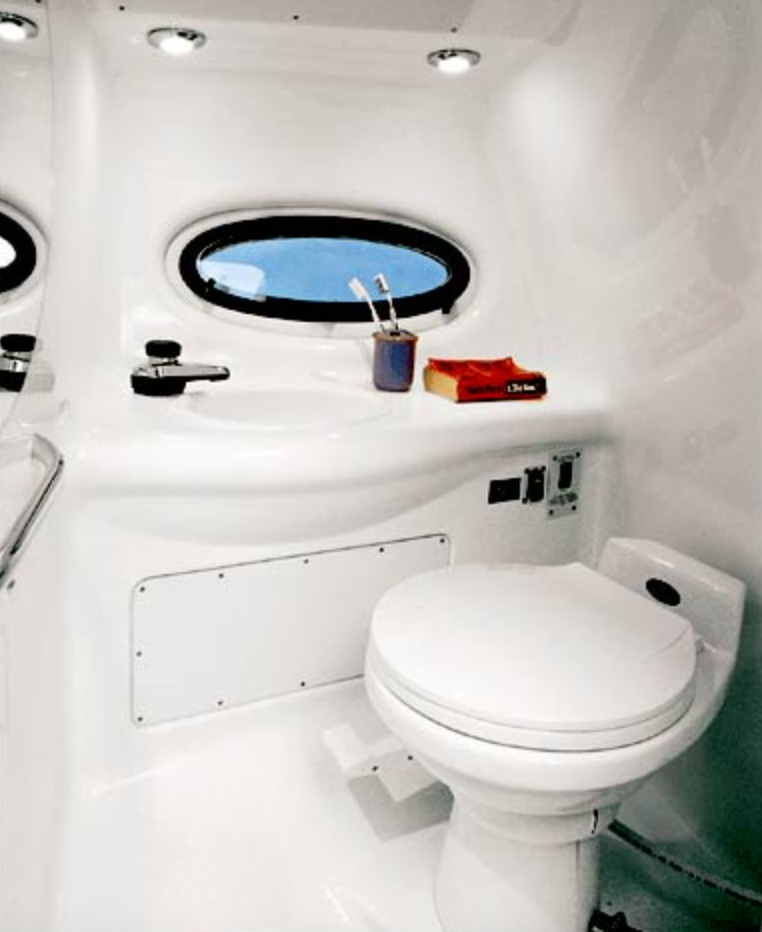10 Tips For a Better Smelling Head
Does your boat stink? If so, in most cases you need look no further than your boat’s head. It was cool to be funky back in the ’70s (and some of us still are, thank you very much) but funky smelling funk has no business on today’s boats. Let’s disco down and check out 10 ways to improve the odiferous vibe of your boat’s head.
•Sanitation system leaks are one of the most common sources of head odors. Start at one end of your sanitation system and check each hose joint for leaks, ensuring all hose clamps are tight and corrosion free. Install double hose clamps were possible, but only if you have sufficient hose barb to allow it — otherwise you’ll simply be crushing or cutting the hose, causing even more leaks.
•Check your system and hose runs for places where raw sewage can collect. Hose runs should be kept as short and straight as possible. Holding tank discharge hoses should also be self-draining (i.e. deck pump out fitting hoses should drain back into the holding tank without loops or low spots).
•Bilge funk — One of the more unsanitary practices found aboard boats are showers that drain directly into the bilge. This setup not only generates odors, it introduces bilge-pump-clogging hair and soap scum into the bilge. A common aftermarket solution is to plumb a gravity-fed sump beneath the shower pan, which collects the water and automatically pumps it overboard. If a boat has a shower-sump box, check to make sure it’s working. An inoperative sump will likely be full of water, which can contribute to head odors. Remove the sump cover at least annually to clean the strainer, check the float switch for proper operation and check all electrical connections for corrosion and potential failure.
•Shock the holding tank at least once a year (spring or fall) to de-scale the inside and flush the system. Shock treatments help prevent odor buildup and can be used a second time if odors are noted mid-season. It’s also recommended to shock the tank when the boat is hauled for the winter. Add shock treatment a week or so before the last pump-out (while still using the boat) which gives the treatment time to slosh about in the holding tank to help de-scale the tank for the winter. It also helps ensure a clean, last pump out.
•Change your hoses. Sewage can permeate old sanitation hoses, releasing bad smells aplenty. To see if your hose is permeated, wipe a section with a warm, damp cloth, drop it in a Ziploc bag, carry it above decks into fresh air, then open the bag and give a sniff. Always use proper sanitation hose when installing or replacing old hoses, including vent hoses. Premium rubber sanitation hose has a thicker wall and features two ply reinforcement and a wire helix. It may sound like overkill, but just remember it has to handle human waste that (on a boat) is roughly 30 times more concentrated than typical residential sewage.
•It’s a fact — the more poop you have around, the worse things smell. Pump out the holding tank early and often, well before it hits the full mark.
•Check the holding-tank vent line regularly for blockages. Mud-daubers and other such insects love to build nests in them and if the tank is filled to overflowing, bits of sewage can clog the vent line. A clogged vent hose not only promote smells, but can also damage the system due to the buildup of pressure each time the head is flushed. A clogged vent also creates negative pressure when pumping out, which can cause damage and possible collapse of the holding tank. When possible, back flush the vent each time you pump out to ensure it stays open and clear.
•Rebuild your toilet (new gaskets, seals, valves, impellers) based on the manufacturer’s recommended timeframe and before leaks occur. The soft parts of your toilet will eventually dry out and become brittle, which leads to cracks and leaks. By replacing these parts on your own terms before they have a chance to fail, you’ve eliminated a boat owner’s number one nightmare – toilet failure (it never happens at a good time) and the emergency repairs necessary to fix it.
•Flush the head sufficiently to push all sewage from the hoses and rinse behind it. How much extra flushing do you need? Two strokes per every foot of discharge hose is a common rule of thumb. If you’re worried about filling the holding tank too soon, clear the hose once at the end of the day or before leaving the boat.
•Clean your head after each trip. Giving sinks, counters, and the areas around and behind the toilet a good cleaning with disinfecting wipes or other such cleaners will leave Neptune’s throne room smelling clean and ready for your next adventure.
By Capt. Frank Lanier
Captain Frank Lanier is a SAMS® Accredited Marine Surveyor with over 40 years of experience in the marine and diving industry. He’s also an author, public speaker, and multiple award-winning journalist whose articles on seamanship, marine electronics, vessel maintenance and consumer reports appear regularly in numerous marine publications worldwide. He can be reached via his website at www.captfklanier.com
